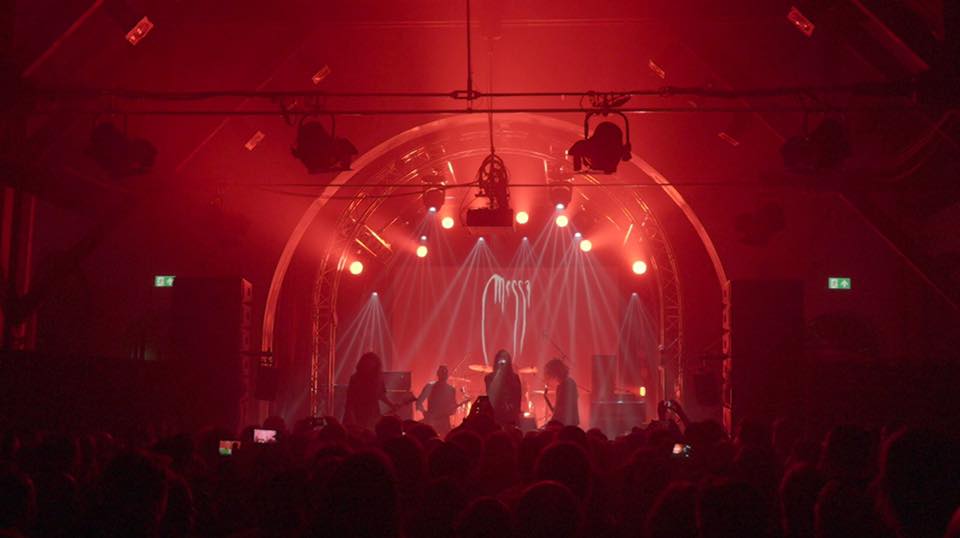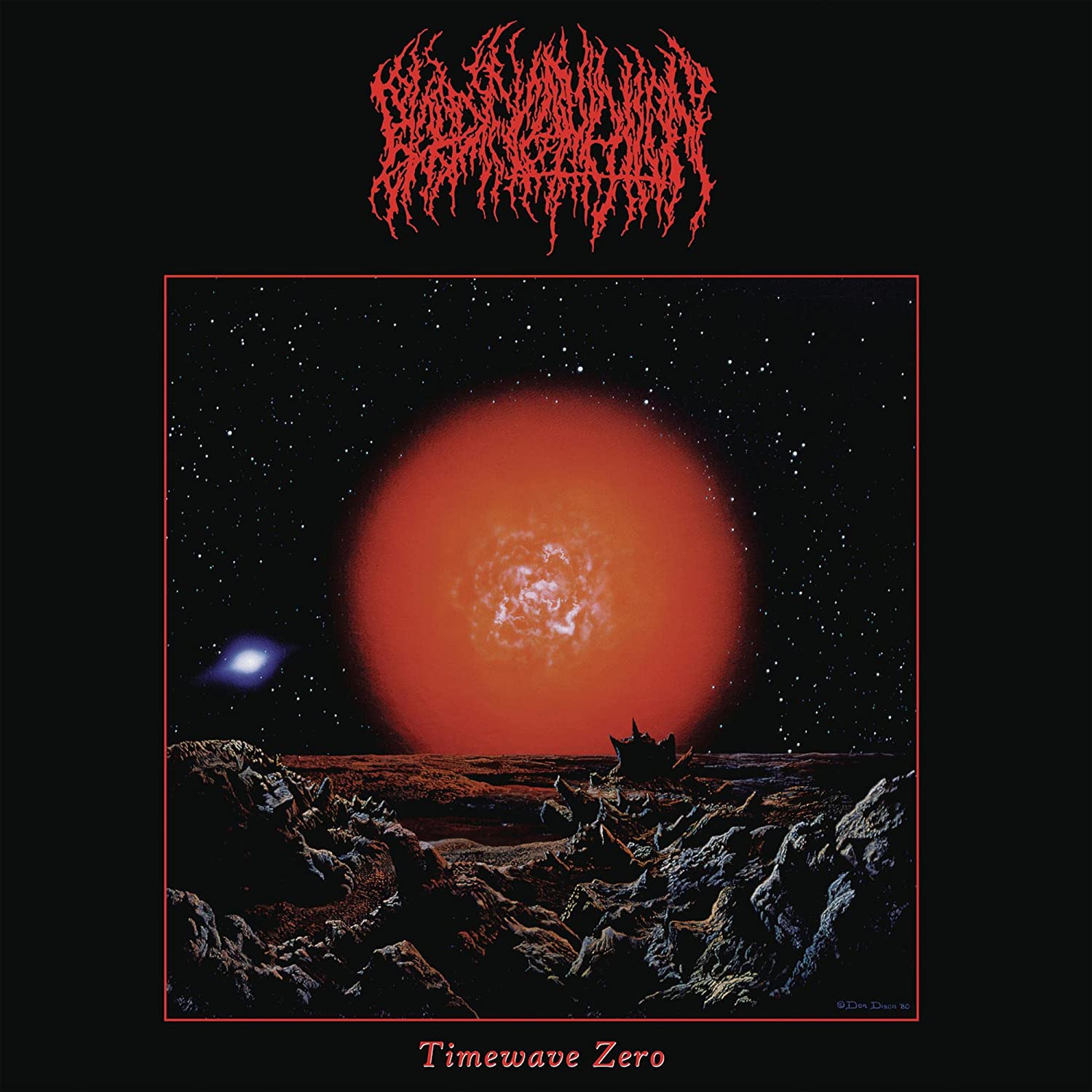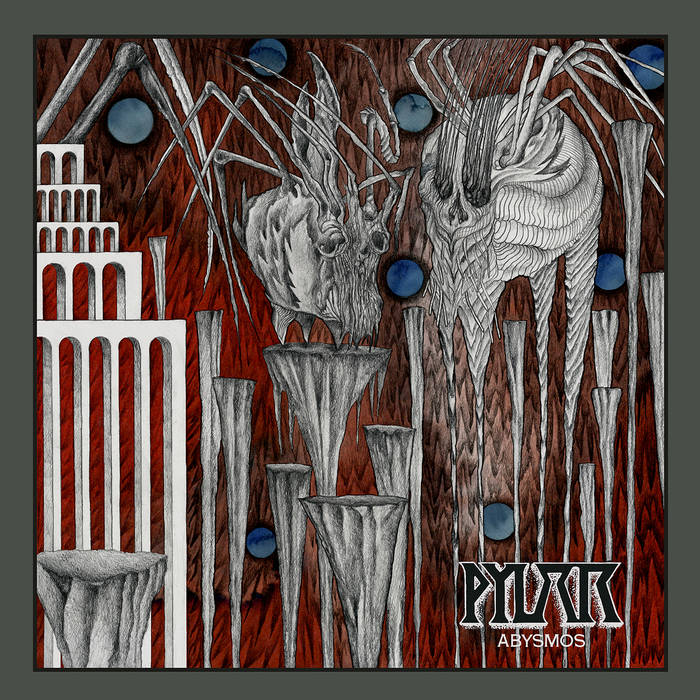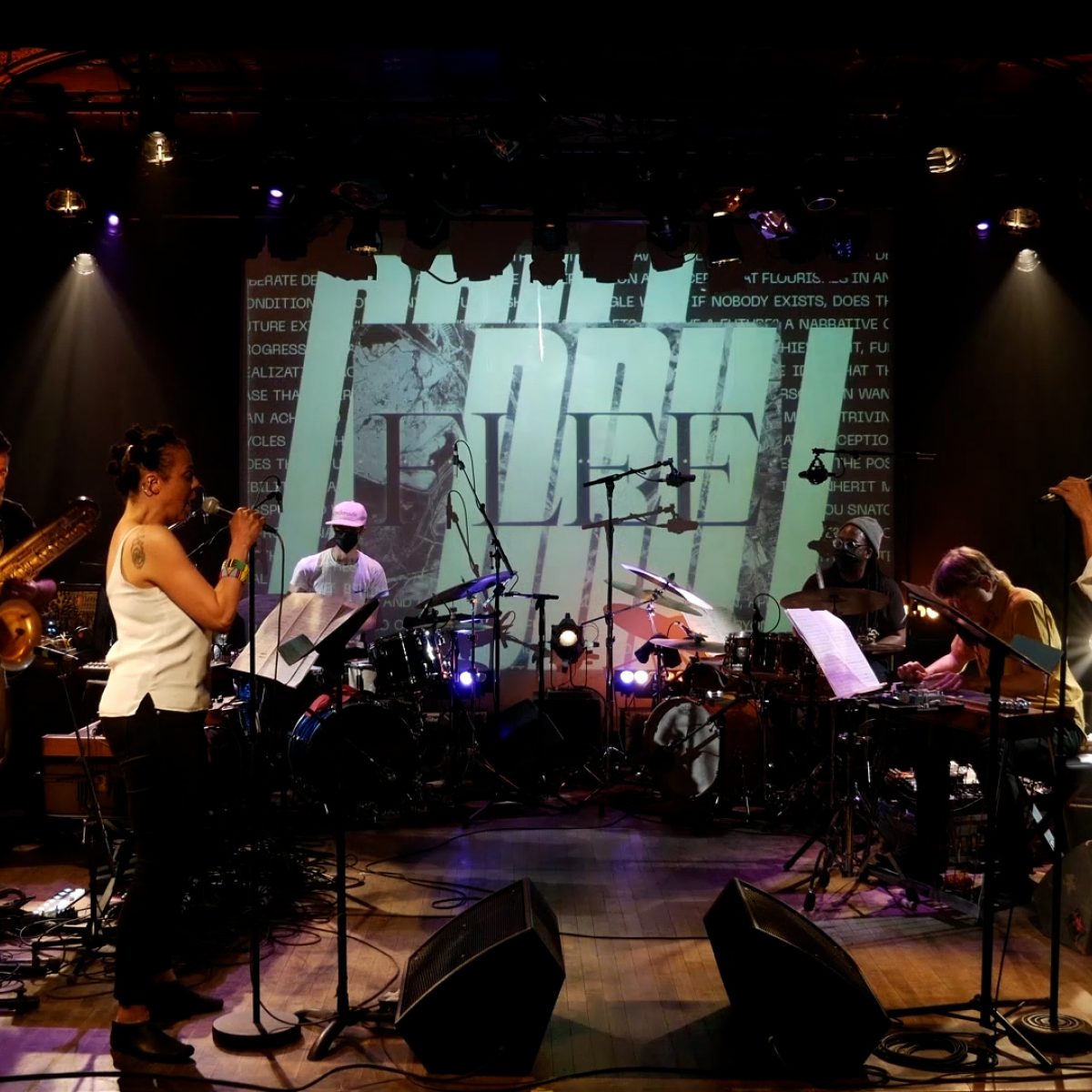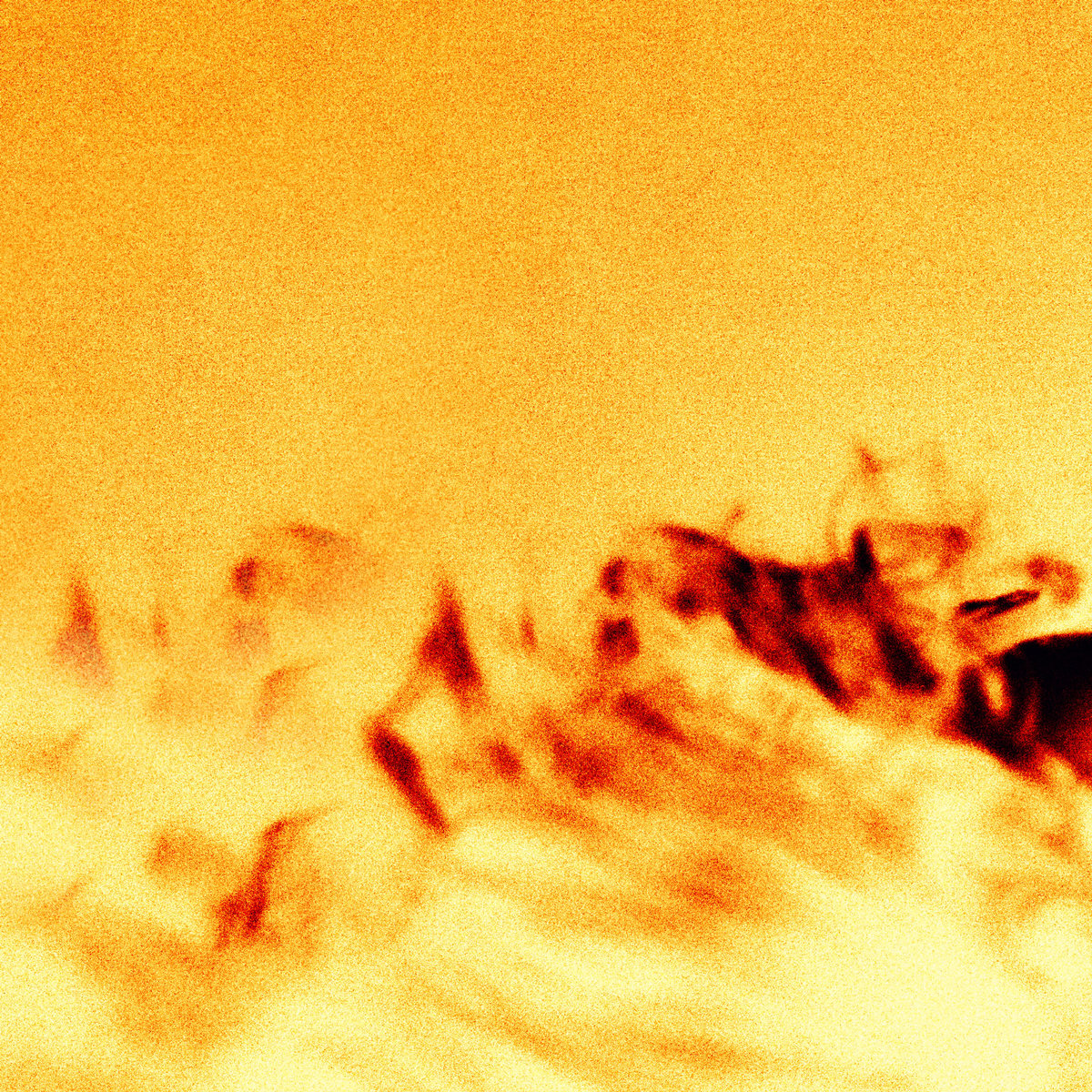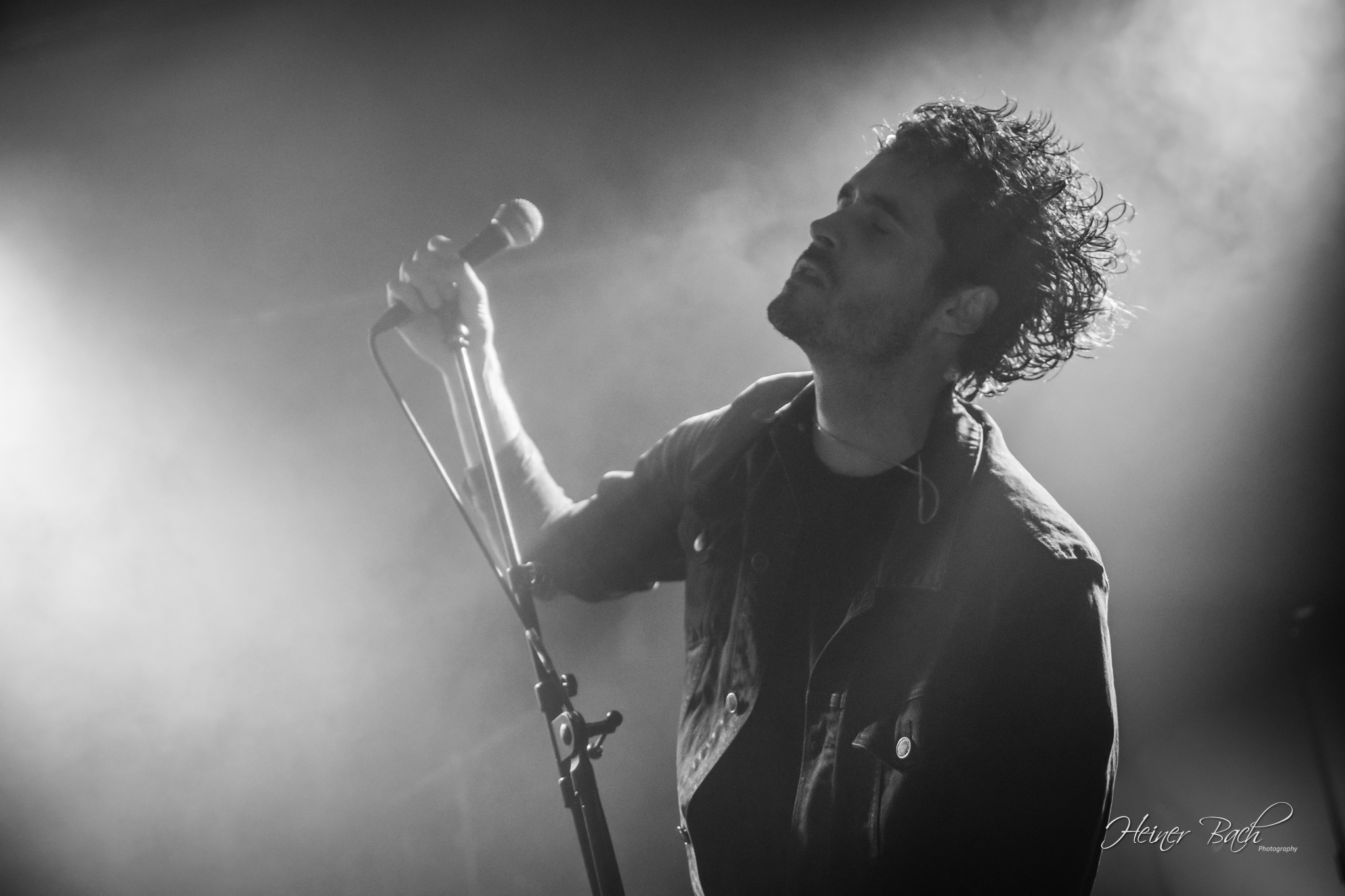On March 11th, the Post-Metal world will and should be watching when Italy’s most elegant combination of Jazz and Post-Metal releases their third full-length onto a waiting world. Well, the VoS-lers surely can’t wait for Messa’s new record Close! And as we like to keep you on the edge of your seats we give you a detailed interview with the band conducted by our living library Knut who has gotten a lot of really good answers, mostly from singer Sara but also from her bandmates on several questions. Maybe this will make you as excited as Knut and us about this release because it is really a great release and another proof that elegance and force are not at all at opposite ends of the musical spectre but really combinable!
Congratulations on your new album! You have really developed your music further! After the two releases Belfry and Feast for Water, you now name your album Close. The cover of the first album has a picture of the famous bell tower in Lake Reschen, the cover of the second one is connected to water and now on this new one dancing women, I assume they are performing the Nakh dance from the video for the song “Pilgrim”. The covers on the previous album had clear connotations with the titles. So, what is the reasons behind the title Close that you have chosen for this new album?
The term “Close” has a lot of meanings. Actually, each of us in the band looks at it through different perspectives. We like to think that “Close” is a direct emanation of our yearning to escape. The main goal was transporting ourselves and the listener on a journey. We wanted to stand by the concept which lies behind the title of the record by creating and recording it while being physically in the same room. It is not a concept album but we always want to have that fil rouge, that thin red thread that ties the songs together, just like we did on our past albums. We came to read about Nakh once we found this 1930s picture by E. M. Schutz. The picture conveyed the sensations we wanted to express through the albums, so we decided to use that photo on the cover of Close.
So, about the dance that is a traditional dance performed by women in Algeria/Tunisia and the distinct Eastern Mediterranean musical influences on this album. At the end of the second song, the heavy, fast and doom-laden music incorporates some sonics from traditional Eastern music, and the next song start with a Duduk, also connected to the Eastern music, the instrument spread through the Eastern part of the Mediterranean all through Armenia. And you incorporate Oud and Dulcimer in the sonics. And the name of the song “Orphalese” is connected to the Lebanese poet Khalil Gibran. These Eastern musical elements are extremely well incorporated in your way of playing doom metal throughout the album. How did these inspirations find their way into your music on this album?
As previously stated, the whole idea behind Close is the journey. We did not want to repeat ourselves, so we looked for new sounds and instruments that are not typical within the metal genre. It was natural for us to search for inspiration in the musical heritage that we have as Mediterraneans. Arabian music is very evocative as it can transport the listener to a different place. Alberto had to learn how to play the Oud - which has 11 strings and is a fretless instrument, which allows you to play microtones – and it was not easy for him. Another challenge we had to face was incorporating these different acoustic instruments while keeping Close a metal album.
Let us go back in time for some background. Six years ago, I found Belfry on Bandcamp, and it happened to me as with so many others; it blew me away. I tried to find other releases by Messa but discovered the jaw dropping thing that this exquisitely performed album in fact was a debut album, full-length even. So where did you come from, musically when forming Messa in 2014? What background of musical styles were fused into what became Messa? What did each of you contribute?
We have very different musical backgrounds and they all ended up straight into Messa’s cauldron. Alberto mostly played Prog, Rocco had many Black Metal bands, Marco played in a Dark Rock band and Sara played bass in Punk/Death Metal/Grind projects. In fact Messa is the first band Sara ever sang in. We all befriended many years before Messa started, though. In early 2014 Marco and Sara started developing some ideas, and soon Alberto and Rocco joined. None of us had played Doom before and we were curious to approach a genre that sounded new to us as musicians. Our songs are the result of our sensibilities mixed together. There are many personal elements that we introduce when we create music. Some examples could be blast beats or jazzy solos.
Metal related music is not for everyone, but when one breaks the code one never leaves this kind music. What was the first album you remember that got you into metal music? What inspired you guys to compose and play metal related music?
Probably the fascination with music derives from our parents and families. All of us came in contact with more extreme metal thanks to suggestions from friends in our early teen years.
Sara: I vividly remember crate digging through my parents’svinyls when I was a kid and being fascinated by the cover of Born Again by Sabbath.
Marco: I think for me it was Judas Priest’s album Painkiller.
Rocco: The three first metal records for me were Reign In Blood by Slayer, Arise by Sepultura and Sound Of Perseverance by Death. I was 12 at the time I made these discoveries.
Alberto: When I was like 8 or 9, just before picking up the guitar with the idea of learning how to play it, I had a small compilation (on cassette) I made myself ripping old vinyls my uncle had in the basement. The very first track was ”Gipsy” by Uriah Heep. I was obsessed with that song. I was really fascinated by the atmosphere and the sounds that guitar and organ had in it. It’s also one of the first songs I later learned to play, so I guess that was the beginning for me.
The band name Messa is connected to mass and by that has some connotation to rituals and ceremonies, just as Amenra evokes with their album names and other things. In addition, you also have this fascinating term scarlet doom to describe your music. Scarlet is an important color in the Catholic Church and as such the color is associated with religion, devotion and sacrifice. At the same time like with other red-spectrum colors it is associated with courage, passion, fire and joy. And you even have the song “Rubedo”, which is associated with redness (blood) in alchemy, and also to Jungian psychology where it represents the “self-archetype” in the archetypical schema. So, where do we place the themes and lyrics of your music in this kind of multitude of connotations?
Nothing is random in our records, we like to have a ‘fil rouge’ binding all our material together. We spend hours doing research on all the sides involved in creating a record. There are various layers of complexity in what we create, from the songs to the graphic design. Loosely quoting The Big Lebowski, we aim for the carpet that ties the room together.
When I put on a new album by Messa I always expect the unexpected perfectly performed. And once again this happened with Close. It might be the most diverse thing you have released so far. This album is composed, rehearsed and recorded during the pandemic which has affected us all. How must we envision this process during the pandemic? Do you have a main composer or is it the collective effort as you write “All songs were written and arranged by Messa”?
Thank you. We tried to play together as much as we could, but sometimes it was nearly impossible due to the situation. Some ideas for this album were developed on our own at home but we always work on songs together in the deconsecrated church we use as a rehearsal room. The songwriting is a collaborative effort 100%.
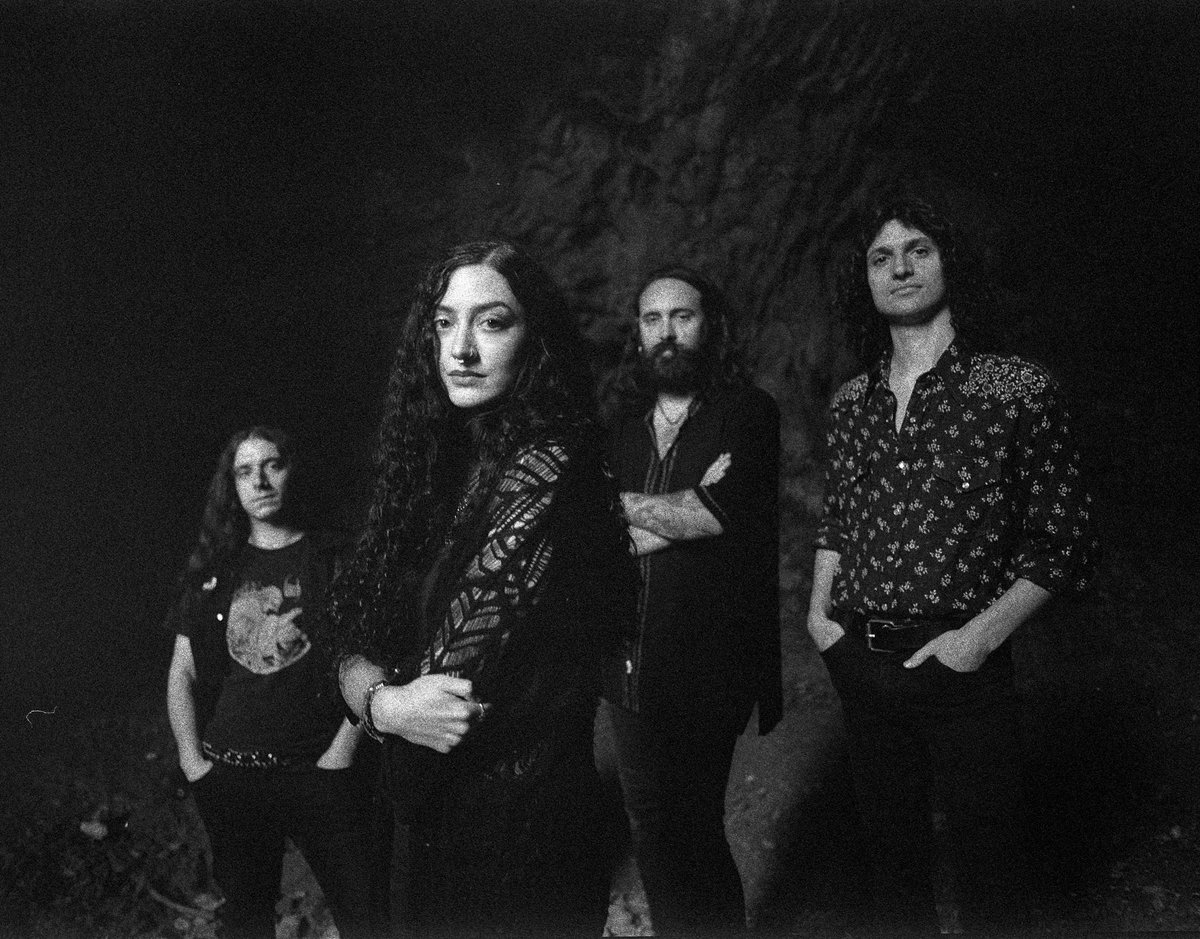
When entering the studio – how clear-cut is your vision of what will come out in the end? Do you plan any space for improvisation ahead of or during the recording process?
Let’s say we always have strong ideas already, but we like to leave some empty room for experimentation. We spent countless hours rehearsing in order to give the album a steady foundation. Some studio casualties or coincidences happen though, and often create something that unexpectedly works great.
We have to ask Sara about her vocals because they are as outstanding on this new release as on the previous releases. On this record your performance is even more versatile than on the others. When did you discover your wide vocal range and had you or have you taken lessons to develop your voice? And who is your inspirational role models when you use and develop your vocals?
Thank you very much. I never took any singing lessons to be honest, it was just trial and error. On a merely methodical aspect a central thing is the awareness of how your body works and feels. Learning how to use your diaphragm or understanding the capacity of your lungs, for example. But the primal aspect of singing is what fascinates me the most. Channeling blood and fire, allowing them to go through you… resulting in you becoming the fire itself. It’s not a matter of technique, it’s a matter of guts. This is basically how I personally experience art in general. I could never sing about stuff I don’t care about. Some of the singers that had a toll on Close are Billie Holiday, Yma Sumac, Lisa Gerrard.
Rocco, you really lay the foundations for the music. As the music is so diverse, you have to follow and it seems sometimes to lead with your drumming. It is impressive how the whole band thunders against the end of “If You Want Her to Be Taken” and the drumming just picks up pace and throws the music into a tumultuous speed punk with screams in the short “Leffotrak”. Who are your inspirational role models for developing your drumming skills?
Rocco: Thanks, I appreciate your kind words. I am inspired by so many different styles of music and drumming. The first time I heard Led Zeppelin, when I was a kid, I was shocked to hear Bonzo. He was the first inspiration and still one of my biggest ones to this day. I also really like Dave Lombardo (Slayer) and Frost (Satyricon, 1349) for playing effortlessly precise in faster music tempos. Some jazz drummers like Buddy Rich or Jojo Mayer (the latter I consider the best living drummer) also had an impact on me, especially for their fantasy.
I appreciate it when drums ‘serve’ the riffs making a solid foundation for a song. One of the characteristics that I think the previously quoted drummers have in common is their creativity: they create non obvious fills that at the beginning feel odd but then turn out to be great. All of them have a drumming style that is very personal, unbiased. And Lombardo is the gold medal of metal drumming to me, but that is my personal view.
Marco and Alberto, the two guitarists, who lay out the doom Sara can soar over, and Rocco can build a foundation for, what are your sources of inspiration and musical role-models? I mean, on this album, you almost dip into every genre, jazz, classical and not at least creating the heavy melodic riffs that more than once evoke the giants of the genre.
Marco: My way of playing is based on Lemmy’s approach with Motörhead. Simple riffs, full power chords, Marshall 100 watts Plexi head with hot tubes and a big cabinet. Once this base is laid down, I mix these elements with other sounds and experimentation. I also play guitar on some songs at concerts and I use this setup with two cabinets instead.
Alberto: I have a really ‘70 approach to playing guitar. At the beginning I really thought there were no such things as pedals and effects, I really didn’t know or care about any of those little boxes. Just the guitar and the amp, all the stuff I needed were controls for tone and volume on the guitar and the amp.
My heroes were (and still are) the great British rock blues guitarists, such as Jimmy Page, Eric Clapton, Rory Gallagher and so on. I pretty much learned everything by ear listening to the records. That had a huge role on developing my ability to improvise and compose.
At some point I was really into Blues (Derek Trucks, Robben Ford) and Jazz (Wes Montgomery, Charlie Christian) so I studied Jazz Guitar at the Conservatory of Vicenza and got my degree.
During that period I went on a vacation in southern Spain and totally fell in love with the Flamenco guitar. I think, as a guitar player, after hearing Paco De Lucia or Vicente Amigo for the first time you’re not the same person anymore.. I’m still trying to figure out the nightmare (in a good way) of playing real flamenco guitar, it’s VERY hard.
In the end I guess it’s all of the above and none of them at the same time. I think you really have to play what’s best for the song, and that might not include what you like the most or not playing at all.
We understand that Sara writes the lyrics for the albums. “Pilgrim” has the lines “Pilgrim/ Your breath blows away/ All my thoughts” and “Dark Horse” features the lines “I only see with my eyes closed/ You are just buying a dark horse”. Lines that let our imagination run wild with the music to support. What are the lyrical themes throughout the album? What comes first, the riffs/melody or the lyrics?
There is no main topic for the lyrics in Close, but for sure there is a whole spectrum of emotions inside of them. Guilt, sadness, anxiety… Confronting yourself and what you feel is inevitable. Regarding the order of creation we always write riffs first. Vocal lines come after, yet sometimes lyrics were created before the music was born and were adapted to fit a certain song later on. I don’t have a step-by-step procedure for writing words, they just come when and where they want. Due to this, I have pens and scraps of paper with me all the time.
Your graphical expression throughout covers, the hard copies of the albums and the videos are very elaborate. We understand that some band members have some background/education in photography, graphics and more. Do you make all your material yourselves or do you collaborate? And: Who came up with the band logo?
We care a lot about the visual outcome of Messa, we like to work on the imagery of our music and often have clear ideas on how to represent it. Marco is the one who takes care of all the art direction of the visual project regarding Messa.
Marco and I then do part of the process on their own (photography, graphic design etc.) when it’s possible to do it “in house”, but we also collaborate with other professionals to bring our ideas to reality. The physical formats of Close will feature a special booklet with film pictures taken by photographer Federico Floriani. He spent hours with us in the recording studio, documenting the sessions. Another person we collaborated with since the beginning is director Laura Sans. She shot all of our videos so far, including the one for “Pilgrim”. Her help was fundamental throughout these years. The band logo was created by Marco himself back in 2014.
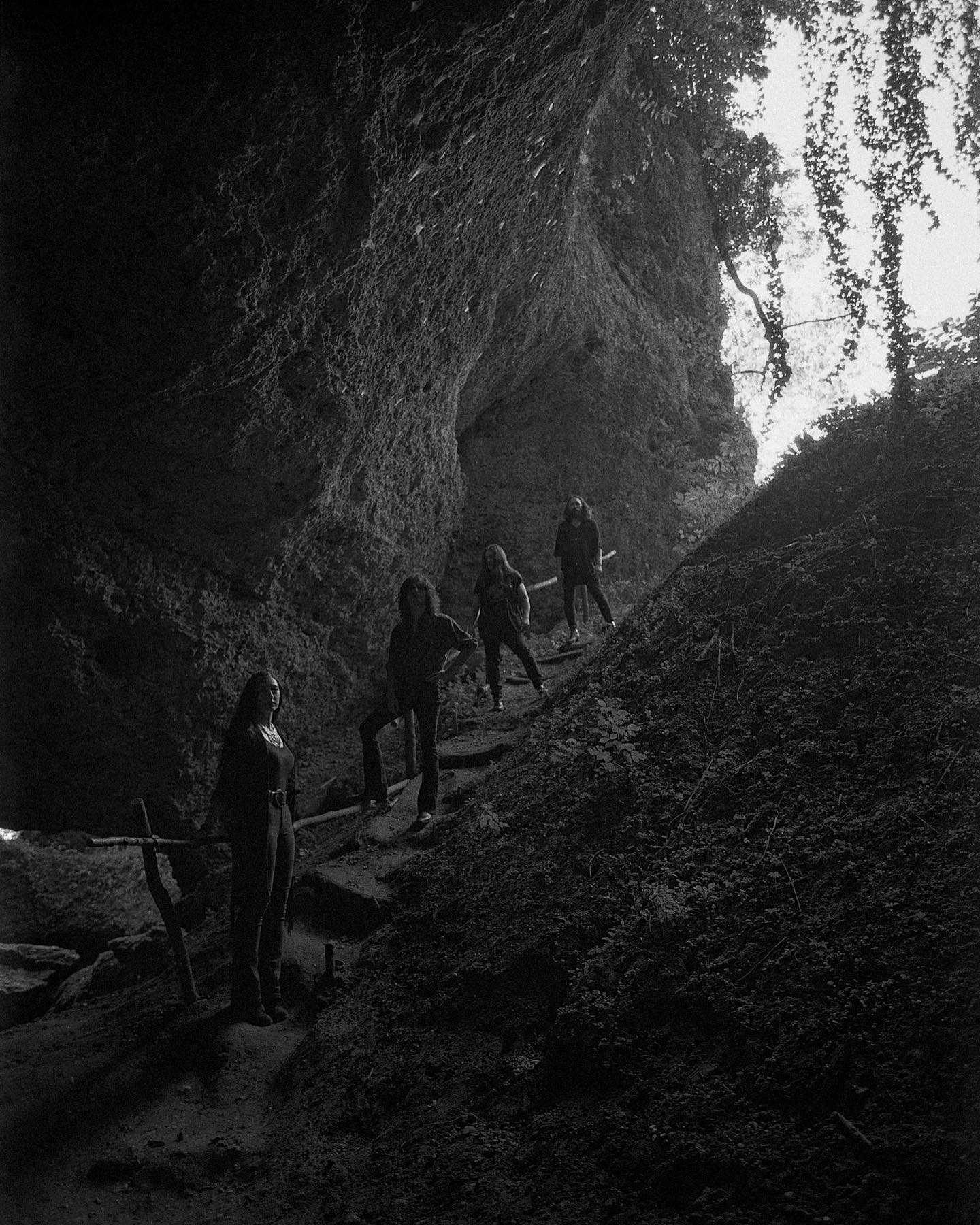
Which bands from your area in the Northern parts of Italy do you recommend we and our readers should check out?
Gorrch – Black metal with a great approach on dissonance and creativity in arrangements. Abrasive as fuck.
Assumption – Death Doom with peculiar synthesizer interventions and low tuned vocals from the depths of hell.
So, here is our infamous quick round of questions, hope you can answer them:
Analogue or digital? Analog.
Vinyl or streaming? Vinyl.
Ingmar Bergmann or David Lynch? The first song ever created by Messa is called “The Hour Of The Wolf” so we’ll go for Ingmar.
Collaboration with Pallbearer or King Woman? Pallbearer.
Hellfest or Roadburn? Both!
Black Sabbath with Ozzy, Dio, Tony or Ian? Democratic answer is Ozzy, but the debate is endless.
Tour with Electric Wizard or Royal Thunder? Electric Wizard.
Wine, whisky, Liquore Strega, beer or water? All of them.
The sea, the mountains, the woods or the desert? Woods.
Touring or recording? 60% recording, 40% touring.
Thank you for taking the time and answering these questions. We wish you nothing but the best for 2022, each of you and as a band.
And for all you Messa fans out there – keep a close eye on our site we might have a few more things about these Italians masterminds coming up until the release date March 11th!
The record will be released by Svart Records and you can pre-order it via their webshop!

